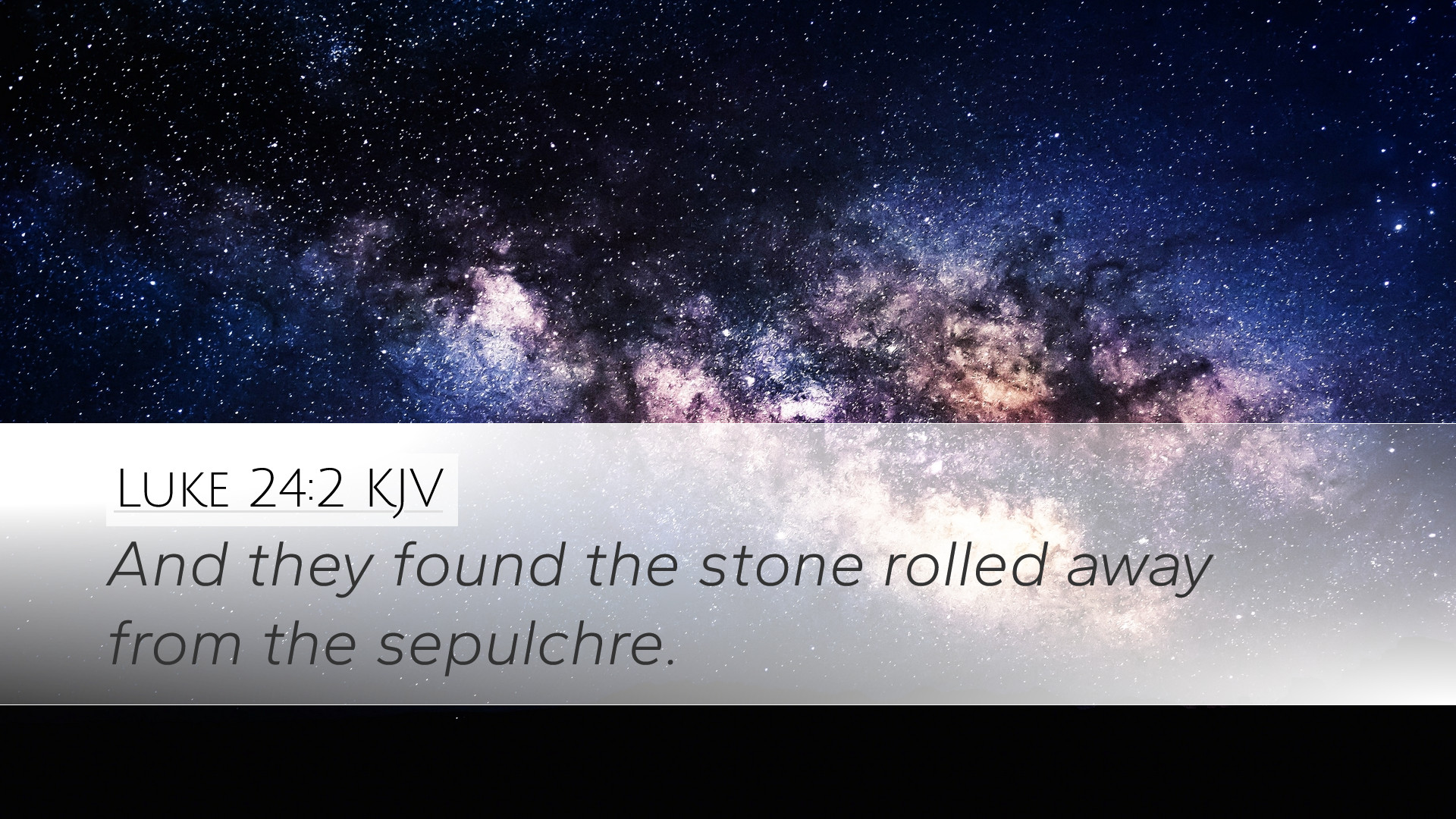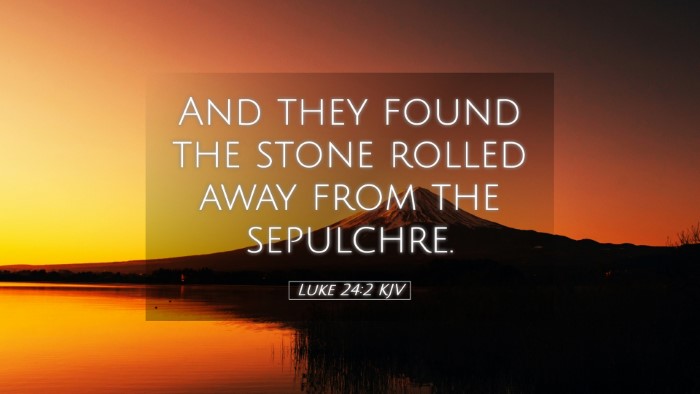Commentary on Luke 24:2
Verse: "And they found the stone rolled away from the sepulchre."
Introduction
Luke 24:2 is a pivotal verse within the narrative of the resurrection, holding significant theological and historical implications. The preceding events depicted in the Gospels portray the despair of the disciples following the crucifixion of Jesus Christ. By exploring this verse through various public domain commentaries, we aim to uncover the depth of its meaning and application for today's audience, including pastors, students, theologians, and Bible scholars.
The Theological Significance of the Resurrection
The discovery made by the women at the tomb encapsulates the core of Christian faith—the resurrection of Jesus Christ. As noted by Matthew Henry, the rolled-away stone symbolizes the victory of life over death, and the prophecy fulfilled regarding Christ's resurrection.
Albert Barnes further emphasizes that the empty tomb serves as a crucial witness to the truth of Christ's resurrection. The stone’s removal signifies not just a physical change, but a profound spiritual reawakening for humanity, as God overcame the grave.
The Role of the Women
The women who arrived at the tomb represented both devotion and obedience, seeking to anoint Jesus’ body. Adam Clarke commends their faithfulness and courage, reflecting that their actions after the crucifixion contrast sharply with the fear displayed by the male disciples. By visiting the tomb, they acted boldly, embodying a faith that transcended their circumstances.
Faith Amidst Despair
Henry notes that the women's journey to the tomb is an inspiring model for believers. Their resolve in a moment of profound grief illustrates the importance of faith and persistence, encouraging Christians to seek the Lord even in times of despair.
The Symbolism of the Stone
The stone at the tomb holds layers of symbolism that are vital to understanding this resurrection narrative. Albert Barnes posits that the stone, which was placed there to seal the tomb and secure it against tampering, also represents the barriers that sin and death impose on humanity.
When the stone was rolled away, it signified the breaking of those barriers—subsequently allowing for the emergence of hope and life. This act foreshadowed the opening of heaven for all who believe, presenting a promise of eternal life.
Historical Context
Historically, the act of rolling away a stone was a formidable task, requiring considerable physical strength, especially given the traditional customs of sealing tombs securely. Matthew Henry highlights the divine nature of this action, pointing out that only God's power could accomplish such a miraculous event. It serves as a reminder that the resurrection was not merely a historical footnote but a divine intervention in human history.
The Angelic Presence
In verses following 24:2, the presence of angels at the tomb adds to the significance of the event. Adam Clarke remarks that these divine beings were there to reassure and guide the women, ensuring that the message of resurrection would be communicated clearly. They articulated the importance of remembering Jesus’ words, thus deepening their understanding and faith.
Implications for Believers
For believers, the implications of Luke 24:2 extend far beyond the historical resurrection. Albert Barnes invites readers to reflect on their own 'stones'—the challenges and obstacles that inhibit their spiritual growth. The removal of the stone becomes a metaphor for God’s ability to grant victory over sin and personal struggles.
Matthew Henry complements this thought by asserting that just as Christ emerged from the grave, believers are called to rise above trials and doubts, empowered by the Holy Spirit who works within them.
Conclusion
In conclusion, Luke 24:2 reveals a transformative moment in biblical history centered on the resurrection of Jesus. The insights drawn from Matthew Henry, Albert Barnes, and Adam Clarke illuminate the text's theological depth, the role of perseverance in faith, and the ultimate triumph over death. This verse serves as a profound reminder to all believers of the hope and empowerment found in the resurrection, urging them to engage boldly with their faith in a world filled with doubt and despair.
Reflection Questions
- How can we spiritually interpret the 'stone' that needs to be rolled away in our lives?
- What can we learn from the devotion and actions of the women at the tomb?
- In what ways can the assurance of Christ's resurrection transform our response to grief and despair?


